Congregational Church, Musgrave Hall, Middlegate and Little Dockray
The Explore Penrith trail helps you discover the centre of Penrith.
Congregational Church and Musgrave Hall
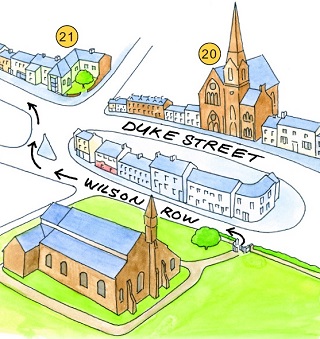
- Proceed along Wilson Row back to Middlegate
but look down Duke Street to see the old
Congregational Church. This was built in 1865
on the site of the Ebenezer Chapel that had
been founded in 1780. Samuel Plimsoll,
remembered for the Plimsoll Line painted on
ships’ hulls, attended this chapel. Mary Wilson,
wife of former Prime Minister, Harold Wilson,
attended this church; her father, the Revd Daniel Baldwin, was Congregational Minister of
Penrith.
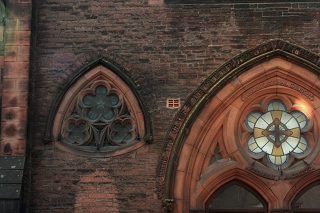
The old Congregational Church window 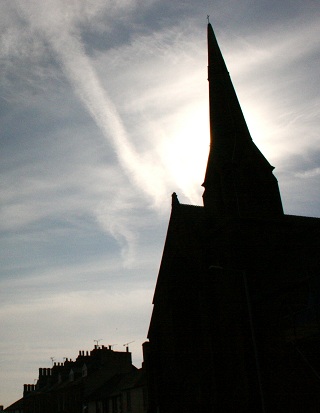
The old Congregational Church - Crossing Middlegate, the building now
occupied by the Royal British Legion, is
Musgrave Hall, the home of a branch of the
Musgraves, whose main family was of Edenhall.
The Musgrave heraldic arms are incorporated in
the lintel of a former doorway facing
Middlegate.
Proceed along Middlegate.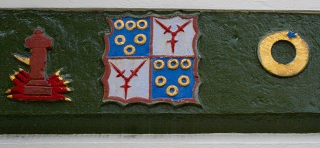
Royal British Legion building detail
Middlegate and Little Dockray
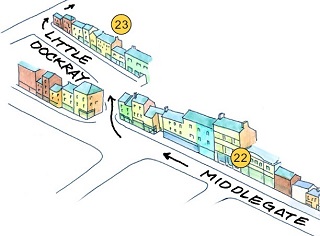
- Opposite the first road on the left (Queen
Street) note the lintel inscribed with ‘RLE 1697’
and a pair of shears, indicating this was the
premises of a wool merchant. Weavers, tanners
and tailors once occupied this street: the
workers lived in cottages up narrow passages
behind their employers’ premises that faced
onto the street.
Further up Middlegate, bear right into Little Dockray.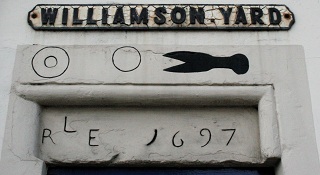
Williamson Yard - lintel inscribed RLE 1697 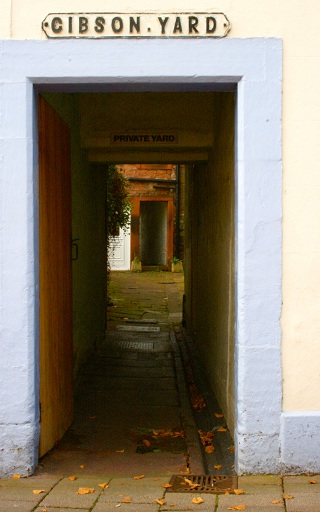
Gibson Yard - The ‘General Wolfe’ on the right hand side
dates from 1679 and is the only remaining
public house of six that used to trade in Little
Dockray. In 1829, the town had 57 public
houses to serve a population of 5,383! This was
because of the lack of safe drinking water; all
ages drank beer of various strengths until the
Board of Health put in mains water and proper
drains from 1853.
Turn right into Cornmarket.

